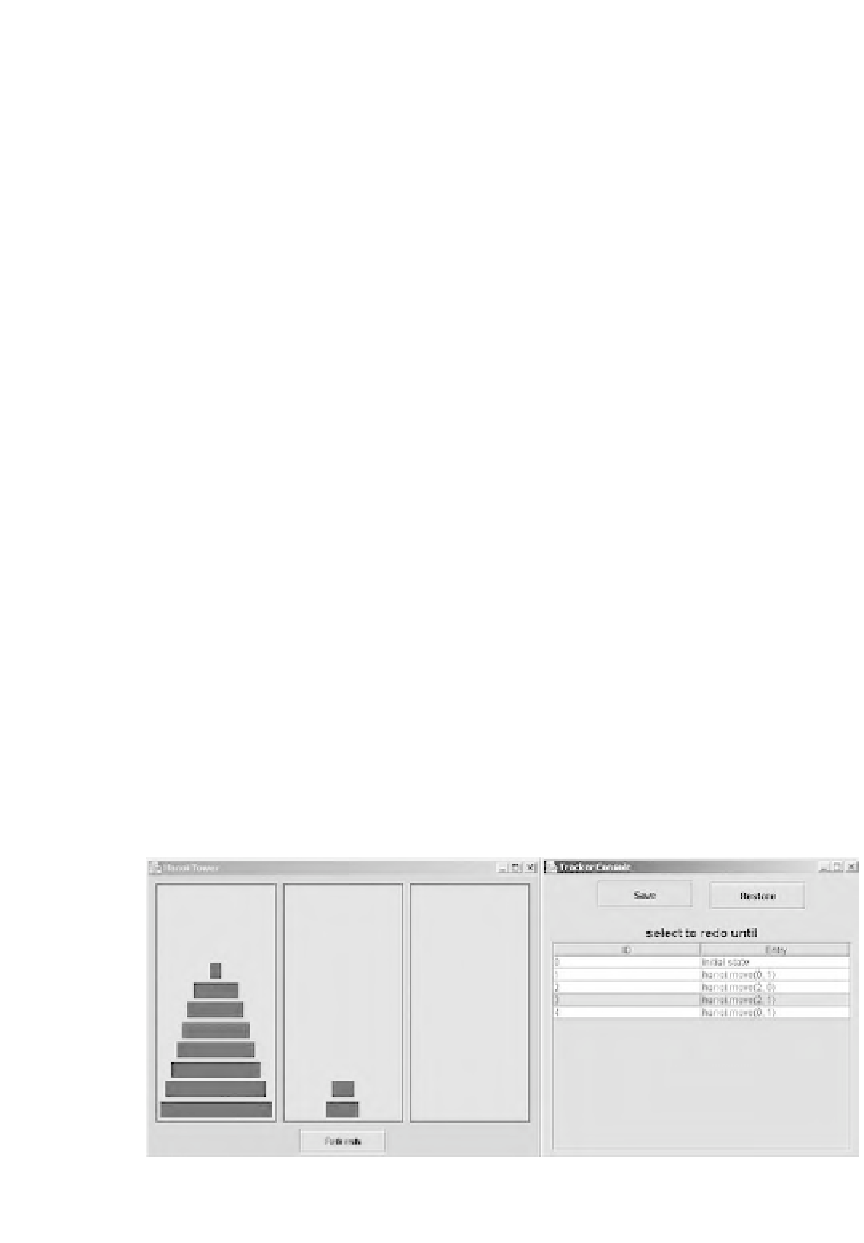Java Reference
In-Depth Information
public
Integer pull() {
Tracker.record(
this
, "pull",
null
,
null
);
if
(first
##
0)
return new
Integer(0);
int
size
#
queue[first-1];
queue[first-1]
#
0;
first - ;
drawingArea.drawingPanel.repaint();
return new
Integer(size);
}
public void
push(Integer size) {
Tracker.record(
this
, "push",
new
Class[] {Integer.class},
new
Object[] {size});
if
(first
##
DIM)
return
;
queue[first]
#
size.intValue();
first
!!
;
drawingArea.drawingPanel.repaint();
}
}
The second scenario tests logical recording of complex operations, i.e.
of method
move()
in class
Hanoi
. Figure 18.5 shows the list of performed
operations.
public class
Hanoi
implements
Trackable {
. . .
public
Hanoi() { }
public void
move(String from, String to) {
int
f
#
towers[Integer.parseInt(from)].sizeOfFirst();
int
t
#
towers[Integer.parseInt(to)].sizeOfFirst();
if
(f >
#
t && t !
#
0)
return
;
Figure 18.5
The Tower of Hanoi after the re-execution of simple operation
move()
Copyright © 2005 Sun Microsystems, Inc. All rights reserved. Reproduced by permission of Sun
Microsystems, Inc.


